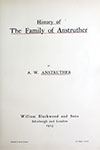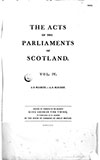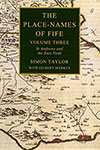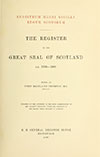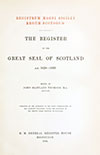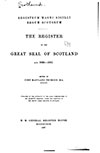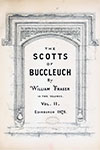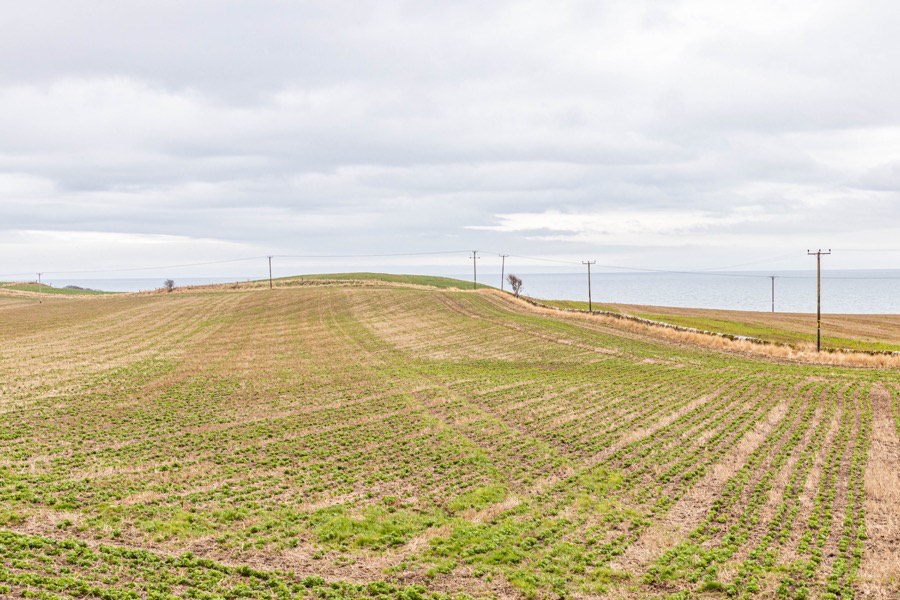

Capelochy Castle was a castle on the Fife coast although nothing of it now remains besides an associated doocot.
The lands of Capelochy or Caiplie are first mentioned in 1235 when Richard de Beaumont gave all the land of Caplawin and three oxgangs of land in the neighbouring field of Ratheruch to David, son of Hugh White of Haddington, for his homage and service, with an annual rent of twelve pence to be paid at Crail. Richard is thought to have been the nephew or great-nephew of Ermengarde of Beaumont, the wife of William the Lion.
Another David was described as “domino de Caplawhy” in 1312 and a Margaret of Caplachy, daughter of John of Caplachy, is on record in 1381.
By the late 15th century the lands of Caiplie had been split into two unequal parts, the upper or over and the lower or nether. The lower two thirds remained known as Caiplie, Capelochy or Netherton of Caiplie, while the upper third became known as Over Caiplie, Thirdpart of Caiplie or simply Thirdpart.
Both parts of Caiplie were owned by Alexander Inglis of Tarwald, who in March 1488 resigned his lands of Tarwald and Caploquhy, superior and inferior, with their mills, and the half lands of Balbirny, which were then incorporated for him into the free barony of Tarwald. The following year James IV confirmed to Alexander and his wife, Janet Durham, the half lands of Caploychquhy named Nethirtoun de Caploychquhy, with its mill, which Alexander had resigned.
There is said to have been a castle here although when it was built or what form it took is not clear. The site occupies the high point of a slight ridge which rises from ground falling towards the coast. Some sources state that the castle may have been surrounded by water although this may have been a conclusion reached based on the word “loch” appearing in the name Capelochy. The earliest form of the name however is Caplawin and has been interpreted as meaning “the place of the (work)horses” being derived from “capall”, the Gaelic for horse or workhorse.
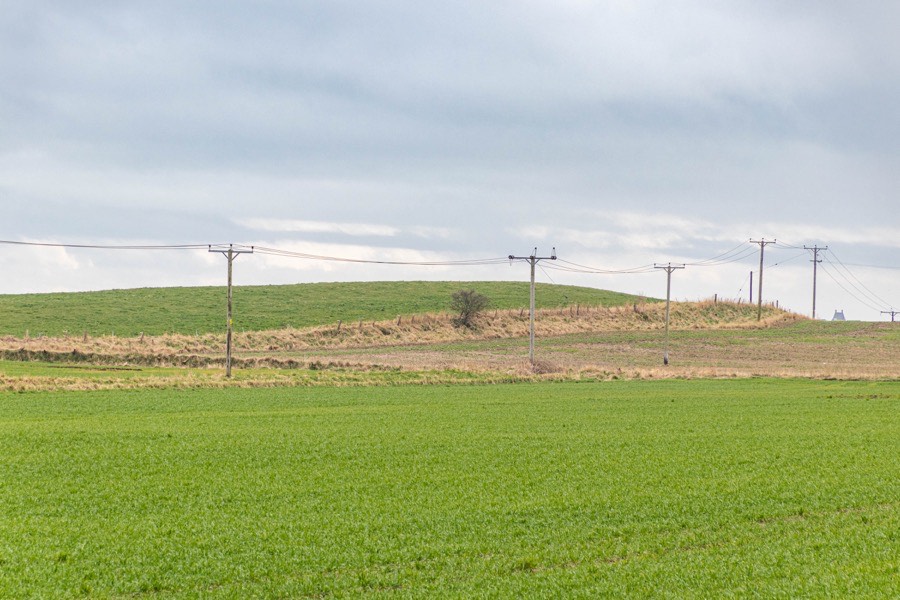
Alexander Inglis was dead by 1518 and was succeeded by his son, also Alexander, who was married to Margaret Barclay, a daughter of Barclay of Innergellie. In February 1541 the younger Alexander resigned his lands of Tervait, including Nethirtoun de Caple, which were erected by James V into the free barony of Tarvait for Alexander’s good service.
Alexander died at the Battle of Pinkie in 1547 and the following year his heir, also Alexander, received a grant of the barony and lands of Tarvet, the lands of Caiplie, Ovirtoun, Thrid part, the lands of Nethertoun de Caiplie with the mill, the half lands of Balbirny and fisheries, the dominical lands of Tarvett with Outsattis annexed to the barony of Tarvett, and the lands of Eister Pitcorthie.
In December 1579 James VI granted to John Inglis, son and heir apparent of Alexander Inglis of Tarvat, the lands and barony of Tarvat, including Nethirtoun de Caple, which Alexander resigned. John was married to Elizabeth Carnegie, daughter of David Carnegie of Colluthie.
Alexander died around 1590 and in 1604 John sold to his son, another Alexander, the lands and barony of Tarvet including Nethirtoun de Caple. John was dead by 1610 and in October 1611 Alexander sold the lands of Caple-Ovirtoun Thridpairt, Nethertoun de Caple, with the mill, mill lands, etc., fisheries, fortalice and manor, and the lands of Eister Pitcorthie, with the consent of his wife, Martha Johnstoun, daughter of James Johnstoun of Elphingstoun, and his mother, Elizabeth Carnegie, to John Scot of Knychtspottie.
These lands were incorporated into the free barony of Caple, with Thridpairt as its principal messuage, for John Scot who was afterwards known as Sir John Scot of Caiplie, the Director of Chancery. The following month James VI confirmed a charter by Alexander Inglis to Sir John of the lands of Tarvett. Sir John would later be known as Sir John Scot of Scotstarvit.
Sir John received further charters of the lands of Netherton of Caiplie, incorporated into the free barony of Scottistarvett, over the next two decades and in July 1631 the tower and manor of Nathirtoun de Caiplie were specifically mentioned.
It may be to this period that a 17th century doocot dates. Rubble-built with ashlar dressings it is of the rectangular lean-to style with crow-stepped flanks and a stepped rat course and consists of a single chamber entered via a doorway in the centre of its south façade.

The castle at Caiplie isn’t shown on 17th century maps although the mill is marked, which might suggest that the castle had fallen out of use by this time although Sir John wrote a letter dated at Caiplie on the 26th of August 1634. Caiplie mill however is marked down by the coast and it may be that a house there had superseded the old castle.
In July 1635 Charles I made a new grant to James Scot, son of Lord John Scot of Scottistarvett, and Margaret or Marjorie Carnegie, his spouse, and their male heirs, of the lands and barony of Tarvett which included the lands of Nathertoun de Caiplie with the mill, fisheries, tower and manor.
Their eldest son, also James, died unmarried and Netherton of Caiplie and the barony of Tarvet passed to his brother, David Scot, who married firstly Nicola Grierson, daughter of Sir John Grierson of Lag and secondly Elizabeth Ellis, daughter of John Ellis of Elliston (John Ellis was married to David’s aunt, Rebecca Scot).
Roy’s mid-18th century map shows three buildings named Old Kiplaw, approximately where the doocot stands, to the north of Newbiggin and Kiplaw Mill which are down on the coast.
The estates passed next to David and Elizabeth’s eldest son, David Scott of Scotstarvit and Balcomie, however he died without issue by 1785 and was succeeded by his brother, General John Scott. The General had three daughters with Margaret Dundas, daughter of Robert Dundas of Arniston, and upon his death in 1775 his Fife estates passed to the eldest, Henrietta.
Soon after her father’s death Henrietta sold Netherton of Caiplie and Thirdpart to Sir Alexander Anstruther, grandson of Sir Robert Anstruther of Balcaskie. The estates then passed to his son, Robert Anstruther of Caiplie.
During Robert’s tenure in 1845 the site of the castle was ploughed and “an immense quantity of stones were dug up, and among them was found, not exactly a stone coffin, but stones set upon edge, within which some human bones were discovered.”
Robert died in 1855 or 1856 and was succeeded by his brother, Major-General Philip Anstruther of Caiplie. The Major-General was succeeded by his eldest son, Philip George Anstruther, who in 1919 sold Thirdpart to the Board of Agriculture for Scotland and smallholdings for ex-servicemen were set up on the land. Whether this sale included Caiplie I haven’t been able to ascertain.
Today nothing is visible at the site of the castle and only the doocot remains nearby.
Alternative names for Capelochy Castle
Caiplie Castle; Capell; Caplachi; Caplachie; Caplachy; Caplauchy; Caplawchy; Caplawhy; Caplawin; Caplawynis; Caplochy; Capeloghy; Caplachi; Caple; Capley; Caplie; Caplochy; Caploquhy; Caplowy; Caploychquhy; Caply; Castle Hill; Cayplowy; Kapla; Kaplie; Kepla; Kipla; Nathertoun de Caiplie; Netherton of Caiplie; Nethertoun de Caiplie; Nethertoun de Caple; Nethertoun de Caploychquhy; Nethir Caplie; Nethirtoun de Caple; Nethirtoun de Caplie; Nethirtoun of Caiplie; Old Kiplaw





